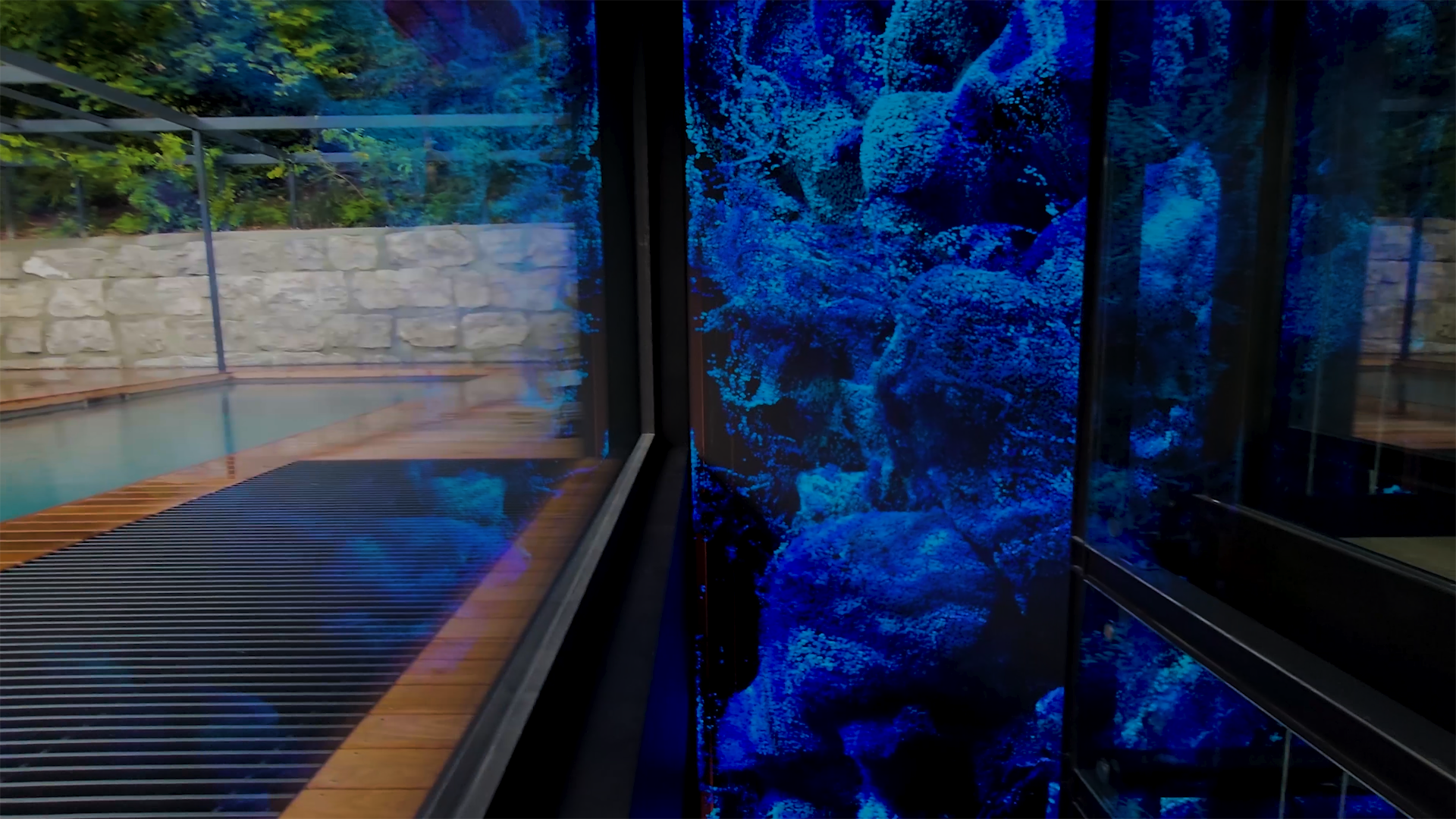
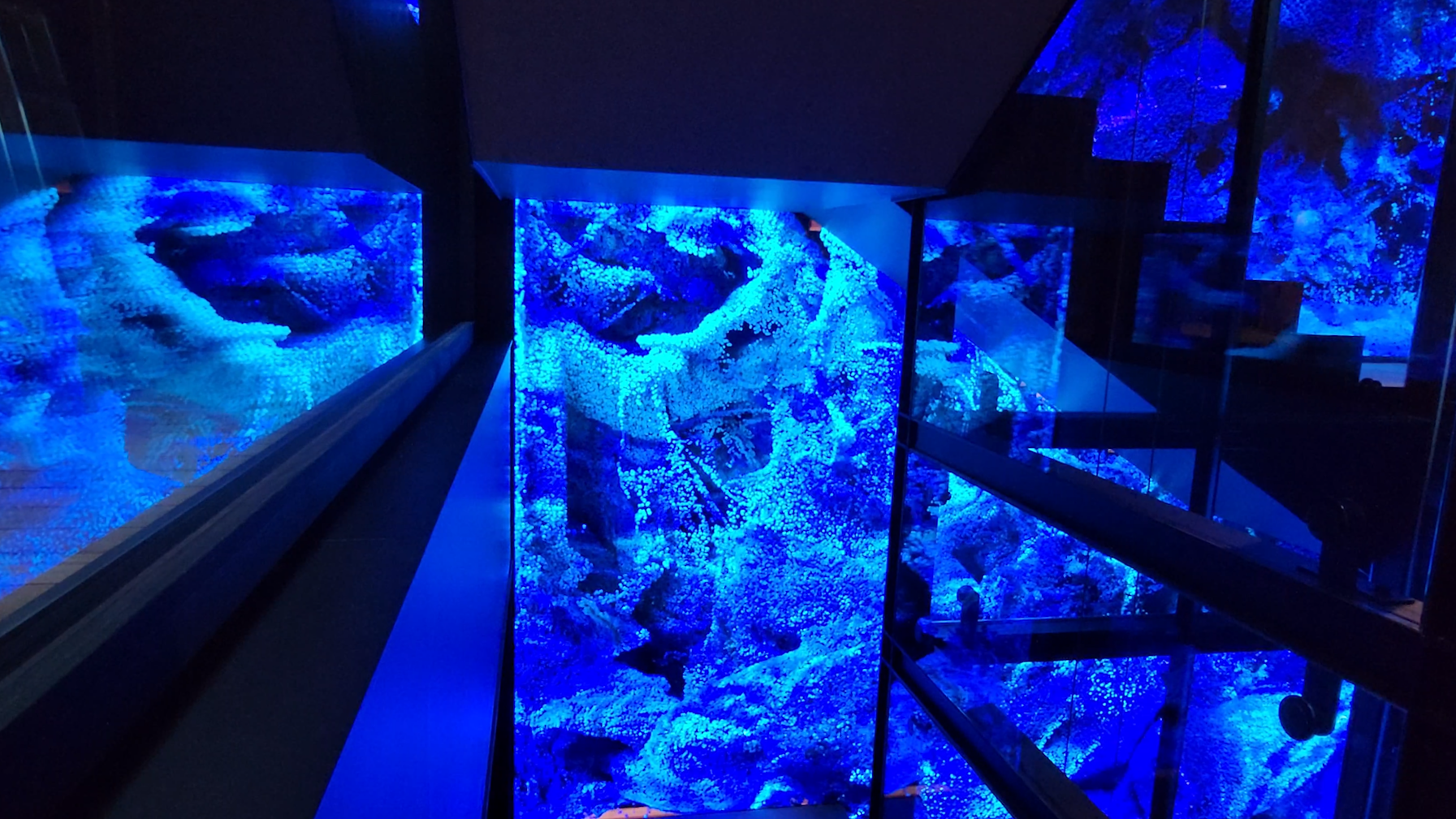
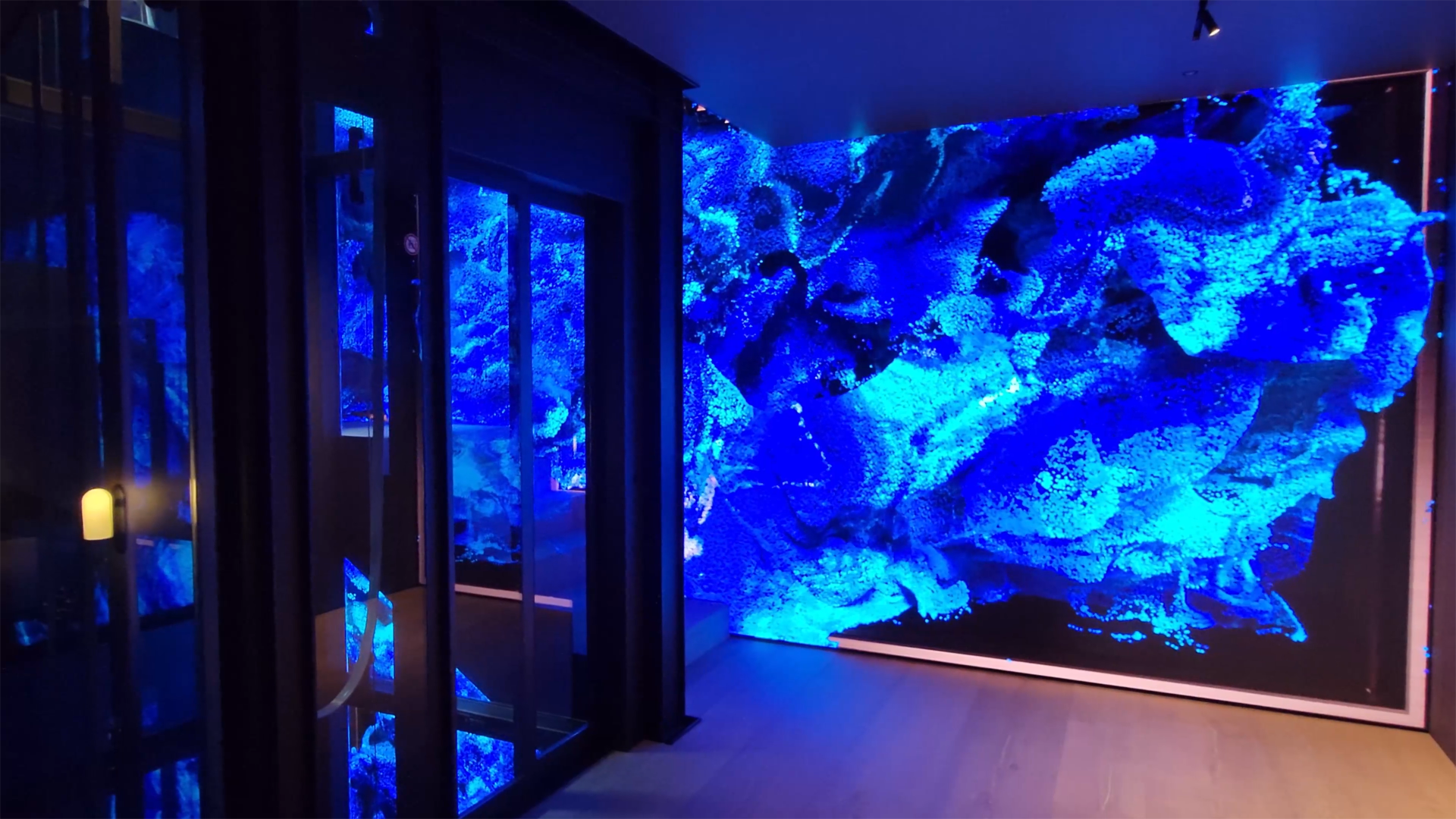
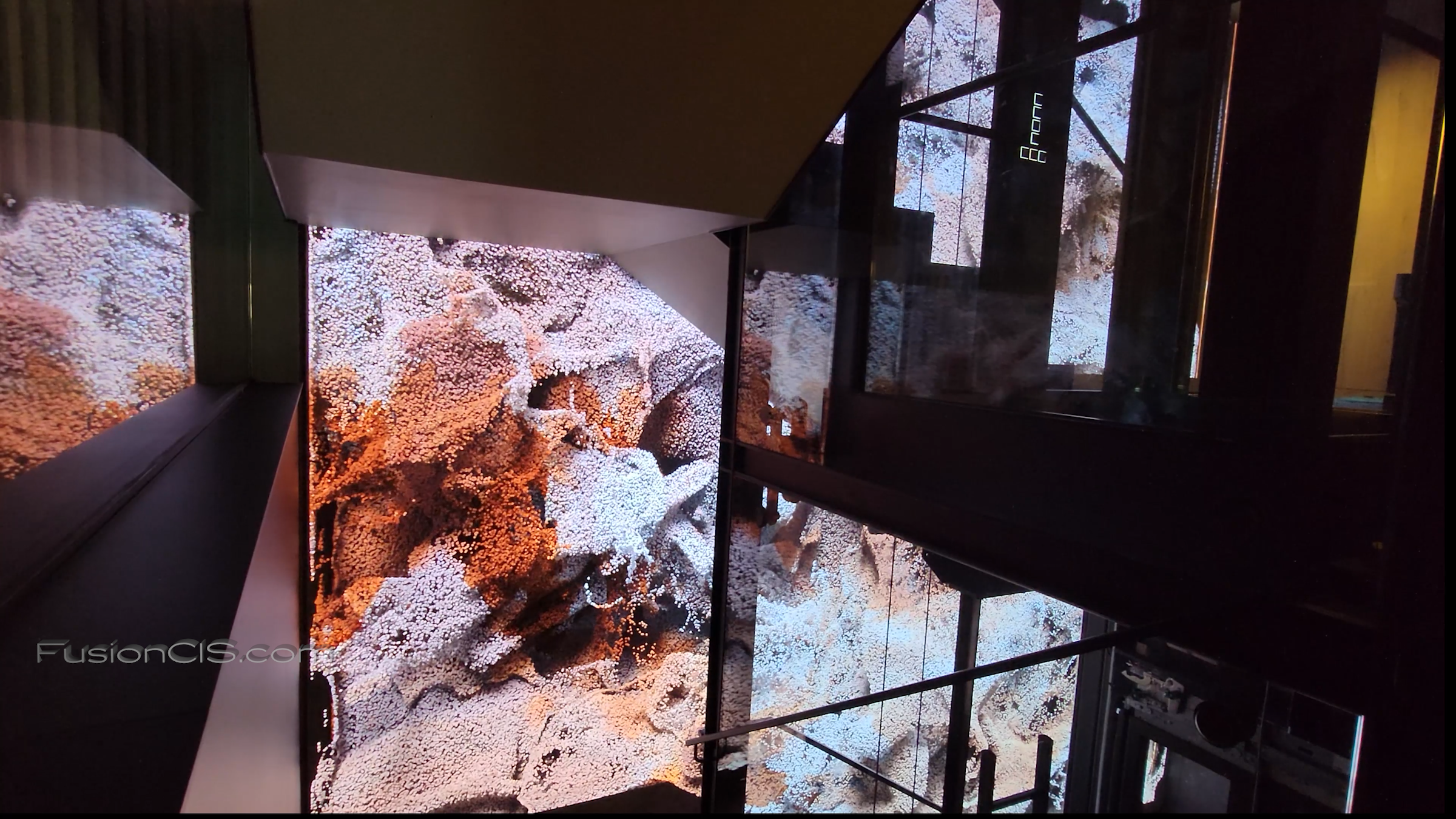
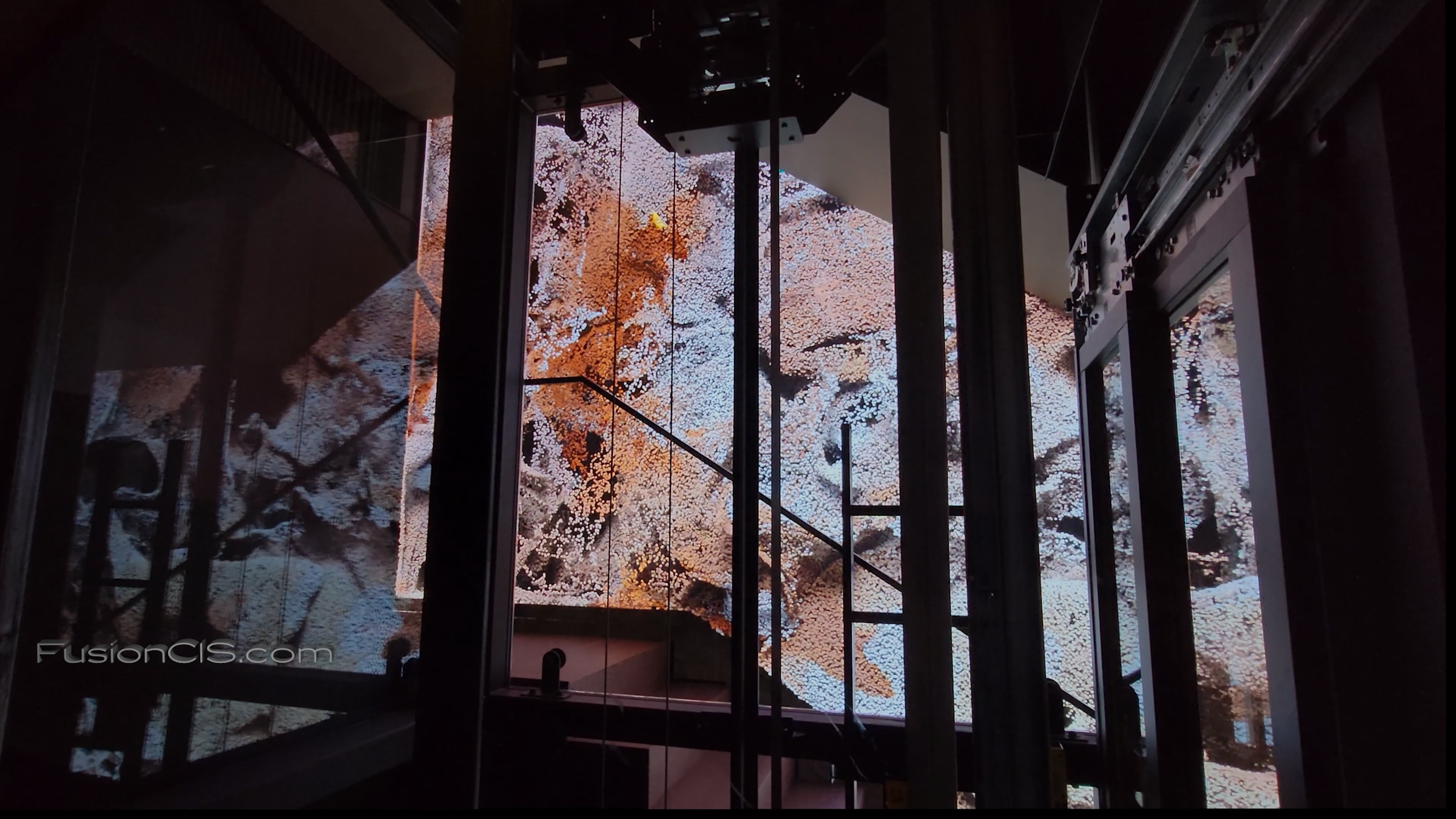
Client: Private Home
Location: Kitzbuhel, Austria
Completion date: 2023
Project Team
Designed, Created, Installed Living Data Sculpture
Mark Stasiuk
Fusion CI Studios
Video Wall Installation
Markus Schernhuber
Multivision LED-Systeme GmbH
Design Concept, Client Liason, Creative Direction
Lauren Millar
Fusion CI Studios
Overview
Art has never been so personal. A stunning digital data-sculpture spans 4-floors in a luxury chalet home. Our Austrian client asked Fusion to create a unique, innovative statement piece for the 4-floor high video wall in his new chalet home – an abstract, personalized piece that would feel integrated in the architectural space while suiting the family’s eclectic personal tastes. Unique in the world, this home video wall is an astounding piece of living sculpture.
Designed as a 3D anamorphic illusion, maximizing a sense of texture and dimension, high resolution fluid simulations inside a digital frame that replicates materials in the home interior. The simulation interacts with the digital frame, deepening a sense of realism. The forces causing flow are driven by the heartbeat patterns (EKG) of the client’s family. The fluid system is colored using an image projected onto the particles, but each of the 60 million particles also diffuses and mixes their color with neighbor particles, so the color patterning evolves, and is dependent on the EKG-driven forces, making this their giant personalized data sculpture.
Fusion created 3 versions in warm, neutral and cool color palettes, to emit light depending on the mood in the space.
Goals
The chalet is built into a steep mountain-side, with a rectangular floating stairwell surrounding a glassed-in elevator, leading from the base level to the vaulted top floor ceiling. Although there are abundant windows on the downhill side, the opposite side against the hill has no windows and receives little natural light. The base goal of the video wall integration was to create mesmerizing ambient visuals that would also illuminate the interior area on all floors of this amazing space.
This home is exquisitely designed to the last detail, and so the secondary goal was that the digital art would be an equally personalized, unique expression of the family.
Process
Experiencing the growth and evolution of this piece in close collaboration with our very creative, digital savvy client was an exciting, stimulating process. We grew from understanding his taste in art, and how that would fit with the design of the space, to incorporating the latest in digital technology to elevate the art to ever higher levels.
The process started with Fusion’s Executive Creative Director Lauren Millar working remotely with the client, discussing dynamic art styles, frame designs, color palettes and moods.
Fusion’s team then created preliminary versions, resulting finally in a first full version of all color palettes, which were installed during a first site visit to allow a full experiential content review as well as measurement of the color and playback performance of the hardware. Unlike video walls in corporate settings, this installation is experienced in an intimate setting 24/7, and must be calibrated carefully for brightness, color, speed, movement, and design of the perspective illusion to suit the unusual display shape and extreme angles of view.
The initial site visit triggered an extensive set of tweaks and adjustments, leading to a 2nd and final version of the art pieces that fully suit the client’s aesthetic and architectural space.
Additional Information
The technical component of this work is based on Fusion’s decades-long experience in fluid dynamics, visual effects, and digital art. The fluid simulation used a viscous grid-based fluid that advects particles, with a separate 20-million particle simulation for each floor of the house, each run to a 3000-frame length. The force field driving the motion is made of over 50 bounded forces and an image-driven field to spatially limit lift and lateral motions high above the frame edge. The force magnitudes within the entire system were driven using EKGs scaled 200x slower to achieve a pleasing cadence, resulting in the simulations representing about 150 heat beats. Color is applied to the particles by a combination of image projection and a mixing/diffusion method reliant on each individual particle’s speed and vertical height, allowing fast and vertically-splashed particles to retain their color for longer, which helps give the data sculpture a more visually distinct structure. Fluid simulation times were each about a week and render times on Fusion’s GPU-based, solar-powered facility were about 20 days for the 9 pieces making up the project (3 floors x 3 color palettes).